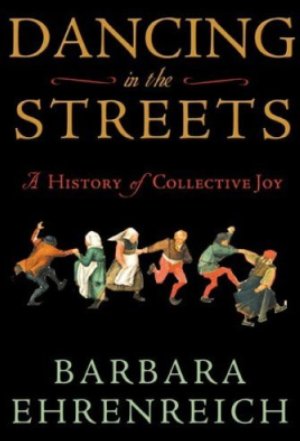
For a change, the headlines are ripped from the book.
In Lakeport, "City won't host BoardStock." The city council decided to pass on the water sports events plus on-shore bands and festivities after a long public meeting when "a majority of local business owners and residents spoke of their concerns that the event would bring to the city violence and underage alcohol drinking on a massive scale."
In Windsor, "Windsor High students snub strictly regulated dance."
Author Barbara Ehrenreich, in "Dancing in the Streets: A Collective History of Joy," (Metropolitan Books, $26) documents countless times in history when officials have made similar decisions to discourage or ban exuberant gatherings, usually citing fears that music would incite high-spirited crowds to "orgies."
It's a groundless fear, she says. What the music and movement actually lead to is a shared consciousness of delight in their own bodies and each other, a mass bonding that can (horrors!) lead to disdain for the officials and their rules.
The Windsor students, in boycotting a dance that required signing contracts not to engage in "explicit dancing," declared their right to enjoy their bodies as they wish. The Lakeport Council, fearing a repeat of last year's event when security forces couldn't control the crowd, admitted they're powerless over masses of people having fun.
There's no question these gatherings have sometimes gotten out of control, with excesses of drug and alcohol use leading to violence.
Could that be at least partially because our couch potato nation has so few occasions for collective joy? Maybe we just need more practice in making our own fun?
Control's the issue, Ehrenreich says, and carnival spirit's the danger. In the ancient tradition of carnival, masks and costumes grant anonymity, mockery of rulers is frequent and the participants are equal.
Today, she says, the closest we come to this is in sports, where the fans use costumes, body paint and mass movement like the wave. And owners of teams and stadiums have done their best to co-opt it, by selling the costumes and memorabilia.
The spectacles staged by Hitler's regime embody the official stance: The only music is martial, the only movement is marching and team gymnastics. The crowd becomes an audience, not participants.
The book's overlong, but Ehrenreich has given us valuable background on what's really behind official control of festivities. Who knows where it might lead if people get the idea they can control their own bodies and lives, even for a few hours?
Ehrenreich also wrote the popular "Nickel and Dimed," in which she worked at minimum wage jobs around the country, and found you can't live on minimum wage.
E-mail Sophie Annan Jensen at This email address is being protected from spambots. You need JavaScript enabled to view it..
{mos_sb_discuss:5}